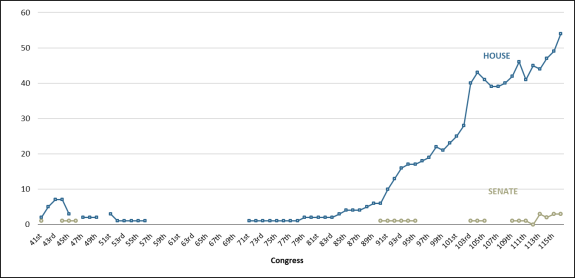Diverse Leadership
Let’s touch on Reconstruction quickly. As a Southerner, I learned in school that Reconstruction was a truly trying time for the South. We weren’t allowed to govern ourselves, there were greedy carpetbaggers everywhere, and the economic devastation of the Civil War added insult into injury. Somehow, someway, the South struggled onward until the Gilded Age, when we shifted to learning about railroads, oil barons, and the Wizard of Oz. Or, at least, that’s my recollection from AP US History, and I’ll have you know that I got a 5 on that AP exam. I wrote a delightful essay on colonial New England, if I remember rightly.
I have to admit that, even now, I have a gap in my knowledge when it comes to the time between the Civil War and World War I. US History is hazy when there’s not a war to clarify things, but luckily, we have a memorable war at least every couple of decades (Spanish-American war notwithstanding). Still, that doesn’t help with the years between 1865 and 1914, so here’s a quick Crash Course video on Reconstruction:
Turns out that the story I remember from history isn’t exactly quite right.
That’s okay, though, because it explains why the first Black US Senator was elected in 1870 and the first Black governor was elected in 1872, a full hundred years before I would have expected either of these things. Without Reconstruction, I would have been baffled by this graph from a report on African Americans in Congress:
For reference, the 41st Congress was gavelled in in 1869, the 57th in 1901, and the 71st in 1929. Reconstruction officially ended in 1877, after the election of 1876 was disputed and they had to come up with a compromise to get Rutherford B. Hayes in the White House.
So if Reconstruction ended in 1877, why was there still a Black man serving in Congress as late as 1901 (George Henry White of North Carolina’s 2nd congressional district, what what)? Well, Reconstruction had lasting impacts and it took a while for legislatures in the South to begin to pass the Jim Crow laws, which would eventually effectively disenfranchise the Black men who got the vote with the passage of the 15th Amendment in 1870. The Klan did its work in the late 1800s, but the Klan did have to work. Its mere existence didn’t immediately end the effects of Reconstruction. And after White left Congress, it would be 1973 before a Black person went to Congress from a state in the former Confederacy (Barbara Jordan of Texas’ 18th). And let’s be honest, in terms of holding elected office, we’re still celebrating Black firsts today.
So, what does all this have to do with GCORR’s task for today, supporting diverse leadership? Well, it’s an illustration that I hope we’ll apply to our churches, our schools, our organizations, and our workplaces in addition to those we elect to office. If we call for diverse leadership at any level, we white people had better be will to back up every single BIPOC leader who is put in place, because there will be backlash to it, even today. White supremacy is everywhere, as we’ve discussed before, and each attempt to dismantle it, however small, has consequences.
Think about Reconstruction. White Southerners hated it, clearly. They hated it enough that they were willing to rewrite the history of the era while they transformed the history of the next through violence and voter suppression. But white northerners got tired of it too. It was too much work to continue to fight for the rights of Black folk in the South and without radical pressure pushing to keep Black people in office where they can make decisions on behalf of their people, white people used every tool in the book to vote them out and keep them out for seventy years.
Of course we should call for racial equity among our leaders. I don’t want to discourage that. But I do want us to be aware of what we’re asking those BIPOC leaders to be and to do and to support them while they do their work. As the third pastor who is a woman at one of my churches, I still feel push back against my leadership, and we’ve been ordaining women since 1968. Can you imagine how much harder it would be to be a Black person leading white people in any capacity?
Anyway, here are the voter guides from the NAACP: https://naacp.org/resources/state-voter-guides/

